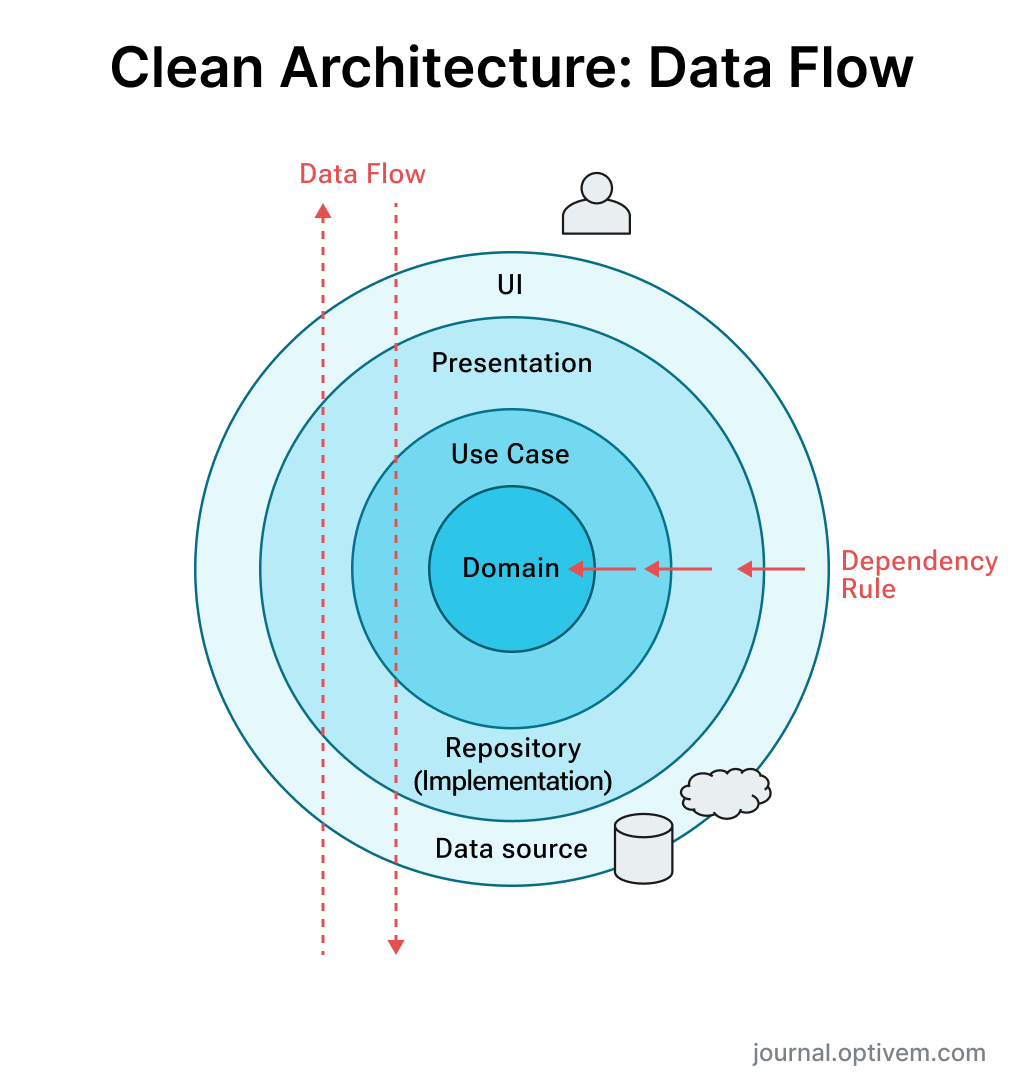Clean Architecture on the Backend: Data Flow
How does data flow through the system?
🚀 Join the ATDD Accelerator waitlist
🔒 Hello, this is Valentina with a premium issue of the Optivem Journal. I help Engineering Leaders & Senior Software Developers apply TDD in Legacy Code.
Data flows from external sources (like the UI) to the core logic and back out:
1. Frontend: Send request to Backend
The user enters the SKU and quantity, then clicks “Place Order.” The frontend sends this data to the backend as a REST API request.
2. Backend: Presentation Layer → Use Case
The REST API receives the JSON request, converts it into a Request DTO, and delegates the work to the Use Case. The controller stays minimal and doesn’t contain any business logic.
3. Backend: Use Case → Domain Layer
The Use Case performs basic validation of the Request DTO, and calls repositories to retrieve entities. The Use Case may create or save entities via repositories and can call methods on those entities to execute business logic.
4. Backend: Domain Layer → Use Case
The Domain Layer returns entities and computed results — such as the product details, total order price, and order status — back to the Use Case.
5. Backend: Use Case → Presentation Layer
The Use Case prepares a Response DTO with the processed results from the Domain Layer and sends it to the REST API.
6. Backend: Presentation Layer → Client
The REST API formats the response and returns it to the client (Frontend) for display.
7. Frontend: Present to user
The frontend receives the backend response and displays the order confirmation, showing details like the product, quantity, total price, and order status.
Data Flow
Data flow defines how information moves between the layers of your system — from the user interface, through the business logic, and back out again.
Each layer has a single responsibility.
Dependencies always point inward, toward the core logic.
You can change external details (UI, database, frameworks) without breaking your domain rules.
Real-life Example: Ordering System
Applying Clean Architecture on the backend (for an e-commerce system).
1. Frontend: Send request to Backend
On the Frontend, user inputs the SKU and quantity, and clicks button to “Place Order“. Then Frontend calls the Backend REST API.
Let’s see what are the Clean Architecture Layers are on the Backend.
2. Backend: Presentation Layer → Use Case
On the Backend, the Presentation Layer is generally the REST API (or it might be SOAP Service, or Message Consumer, etc.).
The REST API has received the request as JSON. We have frameworks that automatically convert the JSON into a Request DTO. In the example below, the Request DTO is the PlaceOrderRequest.
We keep the REST API controller minimal. We just pass the Request DTO to the use case. In this case, we pass the PlaceOrderRequest to the PlaceOrderUseCase.
The reason is because the REST API controller should not have knowledge of application/business logic, it just delegates.
@RestController
@RequestMapping("/api/orders")
public class OrderController {
@PostMapping
public ResponseEntity<PlaceOrderResponse> placeOrder(@RequestBody PlaceOrderRequest request) {
var response = placeOrderUseCase.execute(request);
...
}
}

